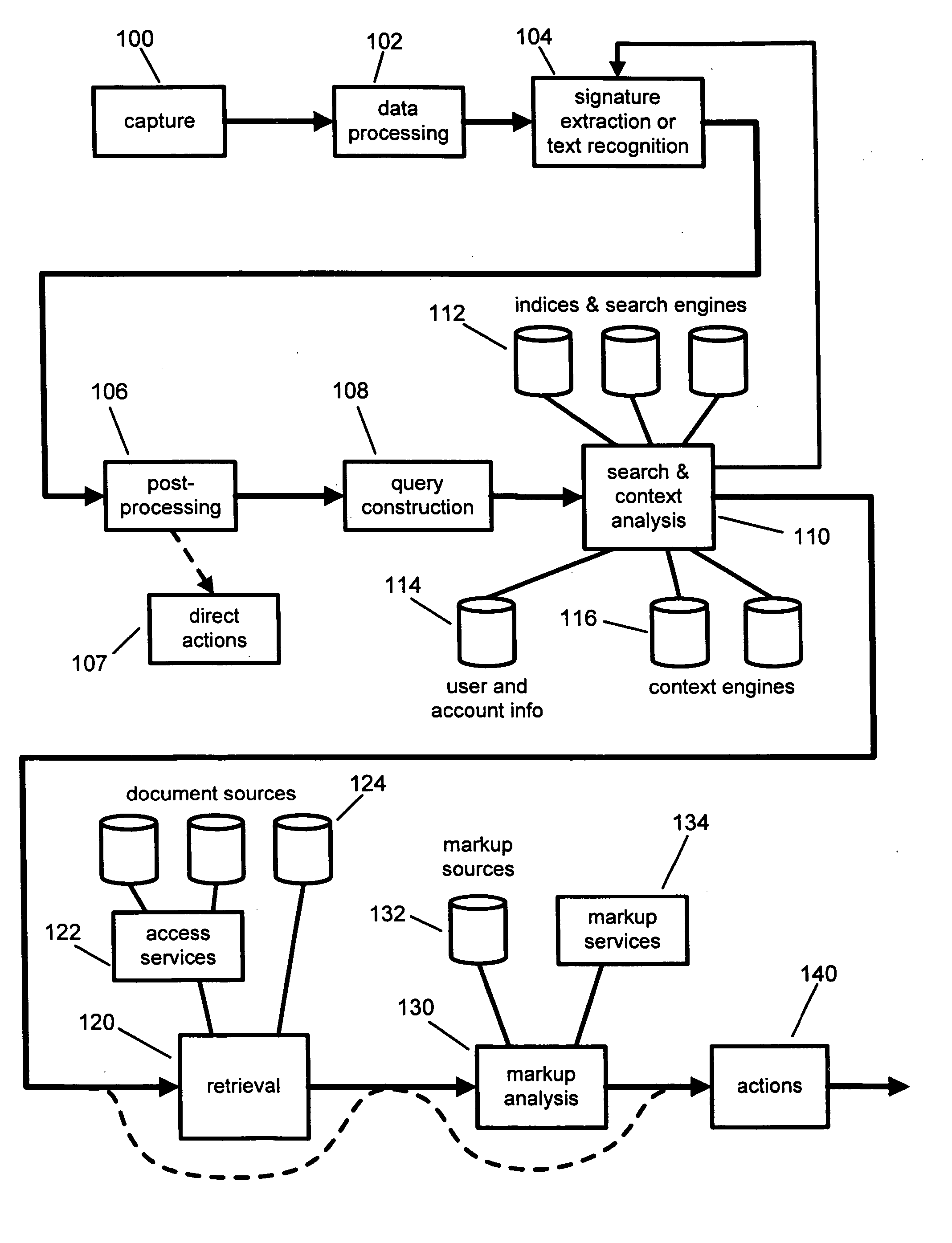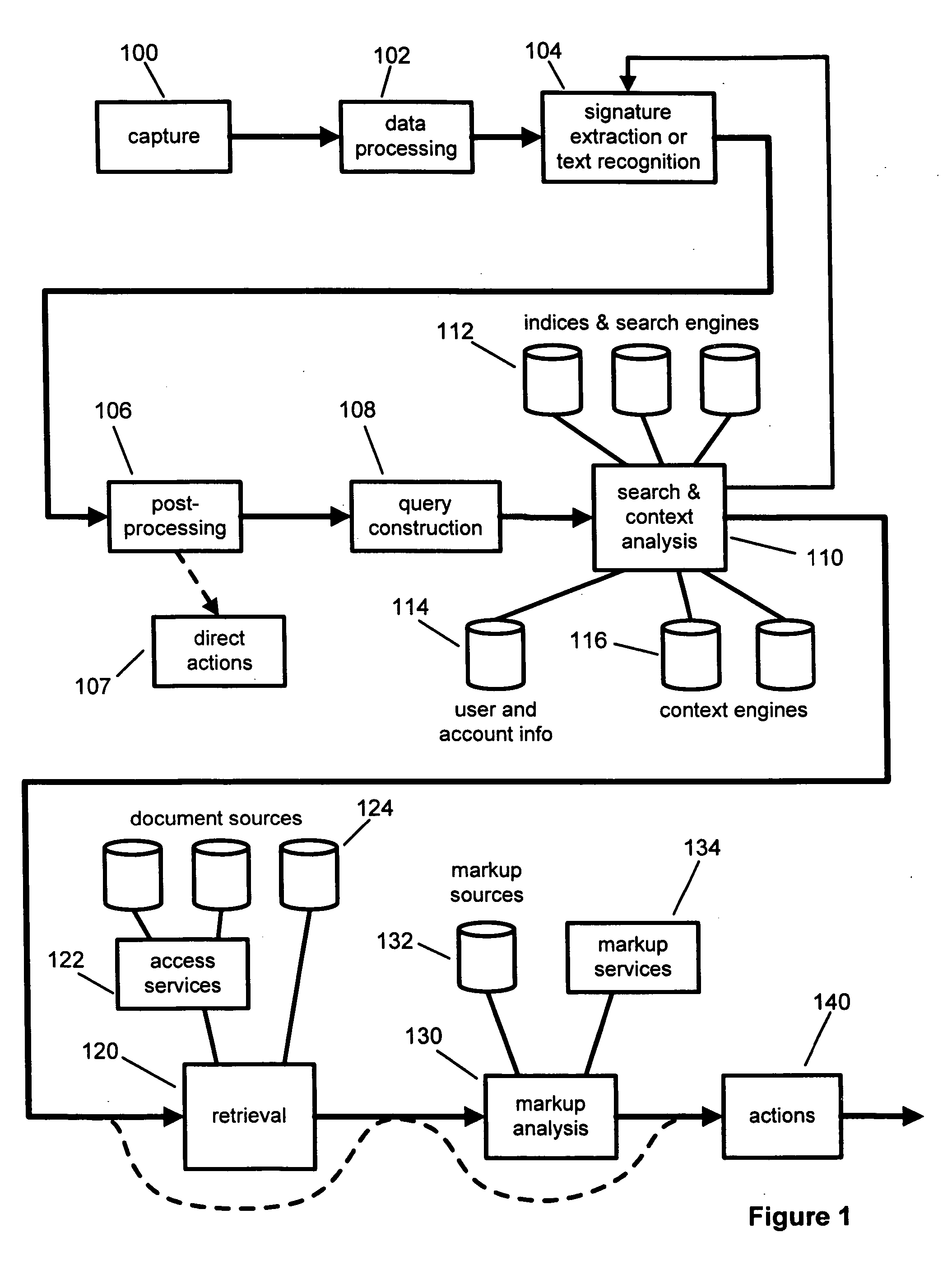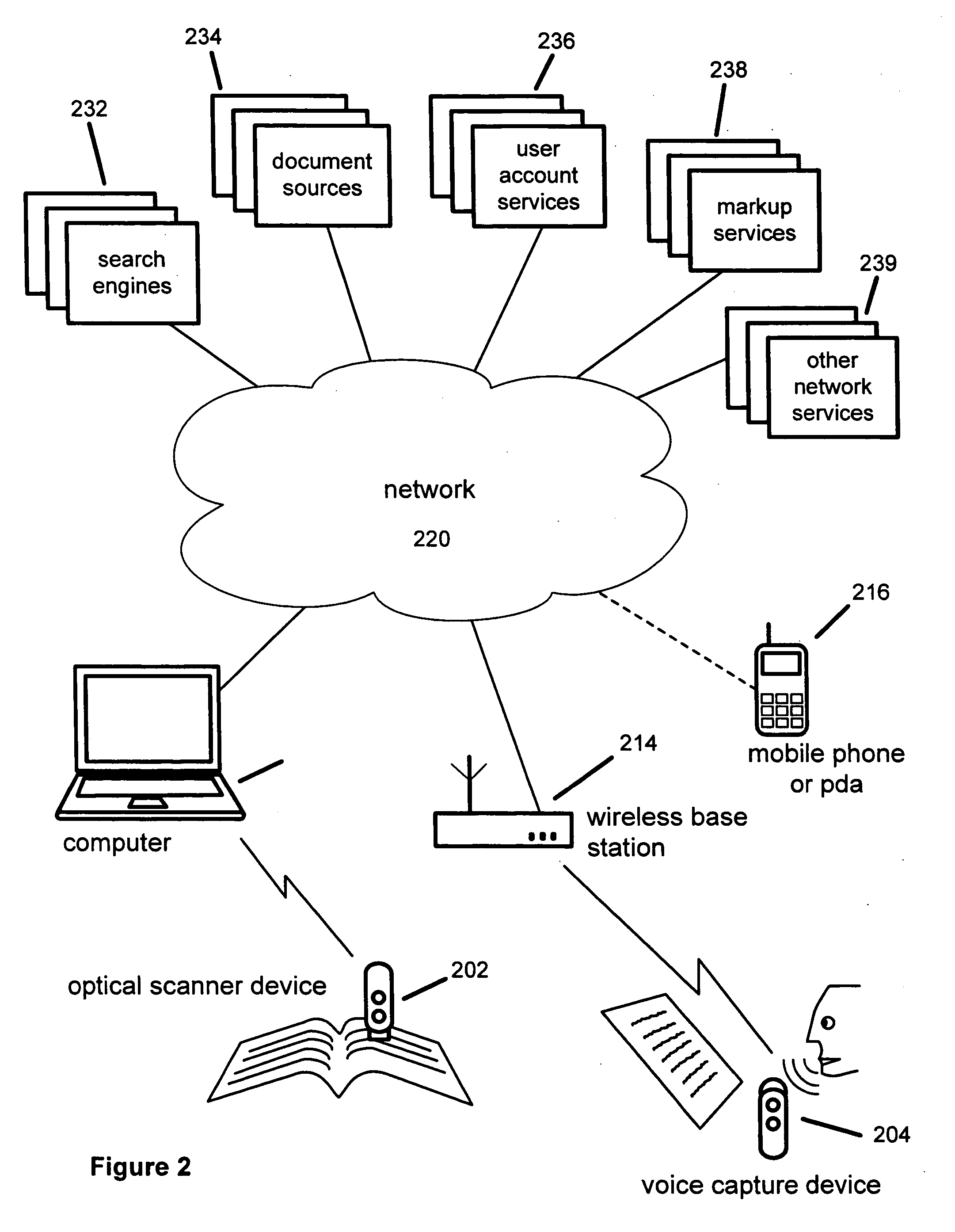Content access with handheld document data capture devices
a document data and content technology, applied in the field of document processing, can solve the problems of losing some of the enhanced electronic functionality of the document, affecting the quality of the document, and affecting the availability of the document,
- Summary
- Abstract
- Description
- Claims
- Application Information
AI Technical Summary
Benefits of technology
Problems solved by technology
Method used
Image
Examples
Embodiment Construction
Overview
[0012] In the system described above, users can subscribe to various services offered by a service provider. These services support the use of handheld document data capture devices. Such services can include communication, transaction intermediation (e.g., providing payment to a vendor for purchases made by the subscriber with the handheld device), search, data processing (e.g., network assisted OCR, location determination, etc.), data archiving (e.g., life library), and many others. For example, a service provider might provide communication and search functions for a mobile phone so that it can be used to capture information from a document and wirelessly communicate the information to a search engine.
[0013] Typically, the user can subscribe to these services by entering into a financial arrangement with the service provider. Financial arrangements between subscribers and service providers are varied but generally fall into two broad categories, post-paid and pre-paid ...
PUM
 Login to View More
Login to View More Abstract
Description
Claims
Application Information
 Login to View More
Login to View More - R&D
- Intellectual Property
- Life Sciences
- Materials
- Tech Scout
- Unparalleled Data Quality
- Higher Quality Content
- 60% Fewer Hallucinations
Browse by: Latest US Patents, China's latest patents, Technical Efficacy Thesaurus, Application Domain, Technology Topic, Popular Technical Reports.
© 2025 PatSnap. All rights reserved.Legal|Privacy policy|Modern Slavery Act Transparency Statement|Sitemap|About US| Contact US: help@patsnap.com



